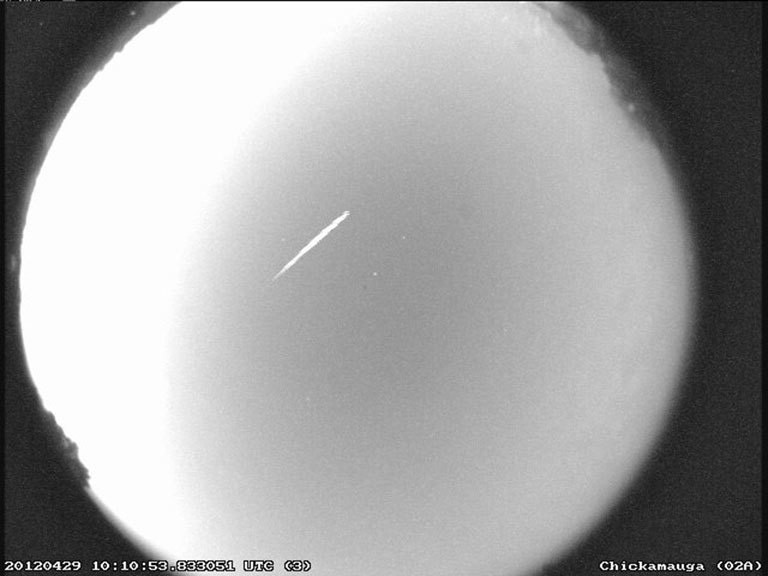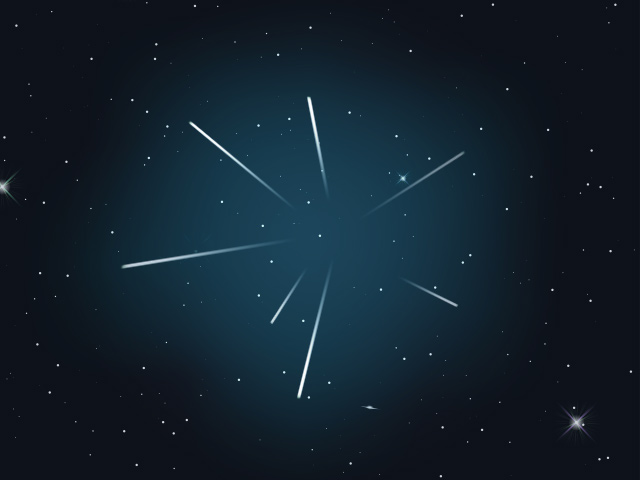Eta Aquarids

Eta Aquarids Meteor Shower
The Eta Aquarids meteor shower peaks during early May each year. These meteors are known for their speed.
Fast Facts
Comet of Origin | 1P Halley |
Radiant | Constellation Aquarius |
Active | April 15 to May 27, 2023 (Peaks May 6) |
Peak Activity Meteor Count | About 60 meteors per hour |
Meteor Velocity | 44 miles (66 kilometers) per second |
About the Meteor Shower
The Eta Aquarids peak during early May each year. Eta Aquarid meteors are known for their speed, with the meteors traveling at about 148,000 mph (66 km/s) into Earth's atmosphere. Fast meteors can leave glowing "trains" (incandescent bits of debris in the wake of the meteor) which last for several seconds to minutes. In general, about 30 Eta Aquarid meteors can be seen per hour during their peak.
Viewing Tips
The Eta Aquarids are viewable in both the Northern and Southern hemispheres during the pre-dawn hours. The Southern Hemisphere is preferable for viewing the Eta Aquarids. The Northern Hemisphere has an hourly rate of only about 10 meteors. This is due to the viewing location of the radiant from different latitudes. The constellation of Aquarius – home to the radiant of the Eta Aquarids – is higher up in the sky in the Southern Hemisphere than it is in the Northern Hemisphere. In the Northern Hemisphere, Eta Aquarid meteors can more often be seen as "Earthgrazers." Earthgrazers are long meteors that appear to skim the surface of the Earth at the horizon.
To view the Eta Aquarids find an area well away from city lights or street lights. Come prepared with a sleeping bag, blanket, or lawn chair. Lie flat on your back with your feet facing east and look up, taking in as much of the sky as possible. After about 30 minutes in the dark, your eyes will adapt and you will begin to see meteors. Be patient – the show will last until dawn, so you have plenty of time to catch a glimpse.
Where Do Meteors Come From?
Meteors come from leftover comet particles and bits from broken asteroids. When comets come around the Sun, they leave a dusty trail behind them. Every year Earth passes through these debris trails, which allows the bits to collide with our atmosphere where they disintegrate to create fiery and colorful streaks in the sky.
The Comet
The pieces of space debris that interact with our atmosphere to create the Eta Aquarids originate from comet 1P/Halley. Each time that Halley returns to the inner solar system its nucleus sheds a layer of ice and rock into space. The dust grains eventually become the Eta Aquarids in May and the Orionids in October if they collide with Earth's atmosphere.
Comet Halley takes about 76 years to orbit the Sun once. The last time comet Halley was seen by casual observers was in 1986. Comet Halley will not enter the inner solar system again until 2061.
Comet Halley was discovered in 1705 by Edmund Halley. He predicted the orbit of the comet through past observations of comets, suggesting that these sightings were in fact all the same comet. Halley is perhaps the most famous comet. It has been sighted for millennia. This comet is even featured in the Bayeux tapestry, which chronicles the Battle of Hastings in 1066.
Comet Halley's dimensions are 10 x 5 x 5 miles (16 x 8 x 8 kilometers). It is one of the darkest, or least reflective, objects in the solar system, with an albedo of 0.03.
The Radiant
Their radiant – the point in the sky from which the Eta Aquarids appear to come – is the constellation Aquarius, the water bearer. One of the brightest stars within Aquarius is called Eta Aquarii, and these meteors appear from this area of the constellation. (Eta Aquarii is one of the four stars that make up the top of the "water jar.") This star and the constellation is where we get the name for this shower: Eta Aquarids.
Note: The constellation for which a meteor shower is named only serves to aid viewers in determining which shower they are viewing on a given night. The constellation is not the source of the meteors.





